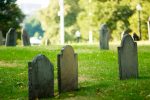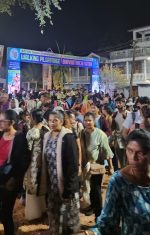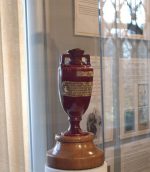Whenever he conducts a history walk around old Delhi, Satish Jacob, a self-confessed history buff who lived in Old Delhi for over 50 years, relives his childhood.
“The vibe in old Delhi was completely different when I was growing up. It may be hard to believe now, but the streets would be abandoned in the hot summer afternoons. The same streets near Jama Masjid that you can barely find space to walk in now were the ones where we played gully cricket,” said Jacob, whose family was among the small Christian population that lived in the walled city.
“We lived with all the other communities in bonhomie. I remember my house was connected to that of my Muslim neighbours’ through a chor darvaza and I would slip into their house all the time. There was a lot of love,” said 76-year-old Jacob, a former journalist.
The first church to come up in Delhi was in the walled city. The Central Baptist Church was originally situated near the Red Fort, where it was built in 1814. It was later shifted to Chandni Chowk road in 1860. The church is also the oldest Christian Mission in North Delhi.
“You could count the total number of Christians on your fingers in Old Delhi prior to the 1857 Mutiny. There were three prominent Indian Christians who were murdered at the time of the mutiny — Master Ramchandra, a mathematician, Dr. Sohan Lal, who was a physician to Bahadur Shah Zafar and Babu Ram, a lecturer at St Stephen’s College. It was after the mutiny that a number of people converted and they lived mostly near the old city’s walls. The Central Baptist, however, had been around for a much longer time. Soon the St James’ Church came up at Mori Gate. This catered to the Anglo-Indians and the British rulers,” Jacob said.
Perhaps the biggest contributions of the Christian missionaries to the city were the educational institutions they started in the walled city.
The Delhi United Christian School for boys and the BM Gange School for girls were among the first institutions in the area. The Queen Mary’s school at Jama Masjid followed in 1912 and the Convent of Jesus and Mary in 1919. The Church of England helped start the St Stephen’s College near Kinari Bazar.
“The girls were encouraged to train as nurses. All the boys had a working knowledge of English. These schools, however, were not open to just the Christian community. People from all religions studied here,” said Jacob.
According to the old timers, Kashmere Gate and Mori Gate — where the St James’ Church is now located — became the hub of activity after 1857.
“It was the Piccadilly Circle of Delhi. Carlton and Wenger’s — the famous bakeries — started here. There used to be a live band at Carlton’s and across the road used to be a club that had the cabaret. It was very elite and fashionable,” said Sidney Ribeiro, who was born into one of the few Anglo-Indian families that came to Delhi in 1909 before the Imperial Capital’s formation was announced. The family’s house was on the Hamilton Road.
The flavour of Old Delhi changed greatly after the Partition, says Jacob.
“The first time I saw a Punjabi woman was after the Partition. I was amazed! They spoke a different tongue and soon became our neighbours,” he said.
The peace and calm of the old days, however, soon left the walled city and took along with it many of its loyal patrons. “Over the past three decades, most of the Christians in the area, just like the others, have moved out to less crowded areas. It has become very congested and the old establishments, too, have shifted,” said Ribeiro.
The bakeries, which were numerous and where the Christian community would go to get their Christmas cakes baked, too have disappeared.“The bakers in Old Delhi were very accomplished. Every Christian household would go to them with their cake batters before Christmas and get their cakes baked. The bakeries are extinct now and people get their cakes from Wenger’s,” said Jacob.
The first Christian woman ruler in India, Begum Samru, also had a haveli in Chandni Chowk. Her haveli now houses the State Bank of India’s Chandni Chowk branch, reported Hindustan Times.
Begum Samru is believed to have converted to Christianity in 1781. “She was married to a French mercenary Walter Reinhardt Sombre and since people couldn’t pronounce ‘Sombre’ she became Begum Samru,” said Jacob.









